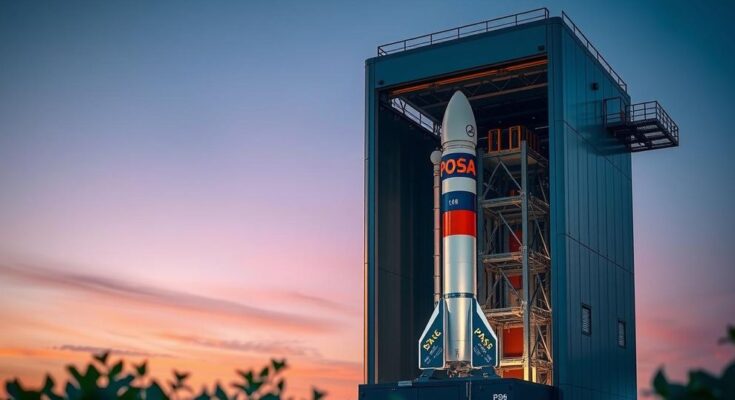ISRO announced the launch of its 101st satellite, EOS-09, on May 18, 2025, aimed at enhancing surveillance capabilities. The PSLV-C61 will launch the satellite from Sriharikota, strengthening India’s monitoring efforts especially in border areas. Former ISRO scientists underscore the satellite’s role in anti-terror operations. Additionally, ISRO prepares for the NISAR satellite launch to further expand its observation technology.
In a significant announcement from New Delhi, the Indian Space Research Organisation (ISRO) disclosed plans to launch its 101st satellite, EOS-09. Scheduled for liftoff aboard the Polar Satellite Launch Vehicle (PSLV-C61) on May 18, 2025, the mission aims to enhance India’s space capabilities.
ISRO Chairman V. Narayanan emphasized the launch timing, noting it will occur at 5:59 AM from the Satish Dhawan Space Centre located in Sriharikota. This launch follows rigorous preparations, as the PSLV-C61 rocket underwent final checks and integrations at the Mobile Service Tower prior to its upcoming launch.
Former ISRO scientist Manish Purohit remarked that EOS-09 functions as an essential successor to the earlier RISAT-1 mission. He stated, “This launch is strategically timed. It strengthens monitoring at borders and coasts, particularly with respect to sensitive areas. The satellite can detect ingress or suspicious movement deemed vital in anti-terror operations, especially after the recent Pahalgam terror attack and Operation Sindoor.”
Reiterating the importance of satellite technology, Chairman V. Narayanan remarked, “With the PSLV-C61/EOS-09 mission, ISRO continues to demonstrate its commitment to both technological excellence and the national interest.” Pawan Kumar Goenka, IN-SPACe Chairman, echoed these sentiments, stressing the continuous need to advance India’s capabilities in satellite technology.
In addition to EOS-09 preparations, ISRO is also gearing up for another significant project: the NASA-ISRO Synthetic Aperture Radar (NISAR) satellite. Set to launch on the GSLV-F16 mission, NISAR will incorporate dual-band radar technology from both organizations to monitor changes on Earth’s surface, ecosystems, and natural disasters, providing crucial insights into environmental dynamics.
The upcoming EOS-09 is equipped with state-of-the-art C-band synthetic aperture radar technology, enabling it to capture high-resolution images regardless of weather conditions or the time of day. Such features will enhance monitoring and management capabilities in various sectors, making it a pivotal asset for India’s space-based surveillance agenda.
In summary, ISRO’s planned launch of the EOS-09 satellite is a vital move towards enhancing India’s surveillance capabilities, particularly for national security. With advanced radar technology and strategic planning, the satellite aims to improve border monitoring and anti-terror operations, while ISRO continues to prioritize technological advancement with future missions such as NISAR. This series of developments demonstrates a commitment to not only technological excellence but also national interest.
Original Source: timesofoman.com




